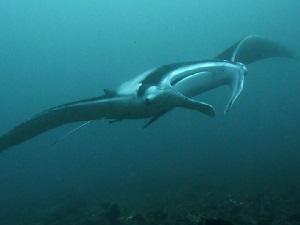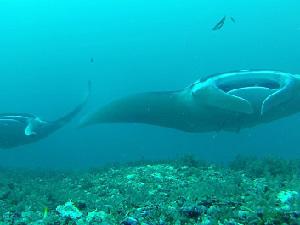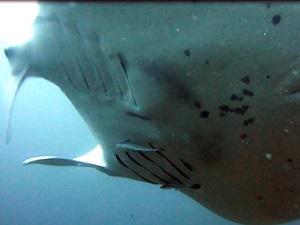Yotam Barr
We aim to gather data regarding manta rays population status, life traits and fishing trends, to improve management of MPA's and shift from non-sustainable to sustainable practice.

Mr Black Tip Approach.
Manta rays (Manta birostris; Manta alferdi) fish provide an important source of livelihood in many Indo-Pacific developing countries. Most of the revenue (over 200 million US$ annually) derives from tourism, as there has been a tremendous increase worldwide in scuba-diving ecotourism with a great demand for sites where large charismatic species such as manta rays, can be encountered. A small fraction of revenue comes from fishery. Even so, the latter is increasing alarmingly, leading to depleted populations worldwide.

Two Mantas smiling.
Due to the manta ray's low reproductive output, they are particularly vulnerable. Furthermore, mantas are migratory, and therefore, hazards in one location may affect the population in another location all together.

Ventral ID.
Gaining a deeper understanding of manta rays in the Philippines will promote better ecotourism management as well as better designation of Marine Protected Areas (MPA's). Moreover, such information, coupled with community education, staff capacity building and collaboration with local NGO's to educate local community can aid in the creation of alternative sources for livelihood, and can assist local stakeholders in shifting towards sustainable practices like manta watching and monitoring. All these will aid in the conservation of manta rays and other marine fauna and habitats in the Philippines.
The proposed project aims to achieve these goals by acquiring valuable information on aggregation sites, life traits and population characteristics of manta rays in the Philippines through photographic documentation, DNA sequencing, environmental conditions correlation and surveys in fish markets.